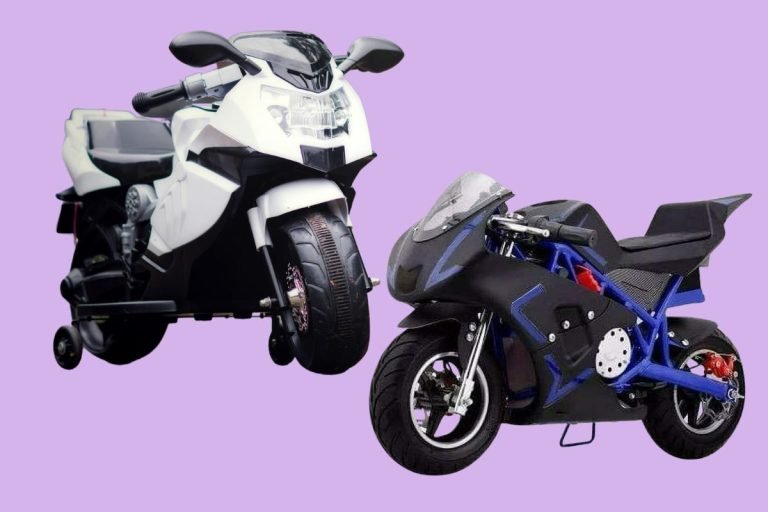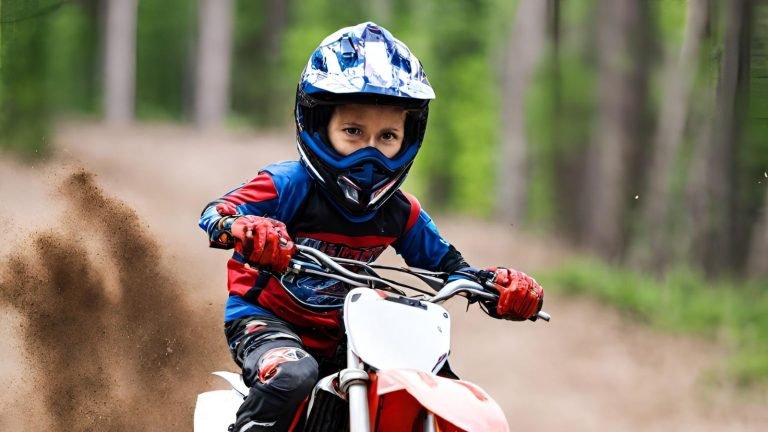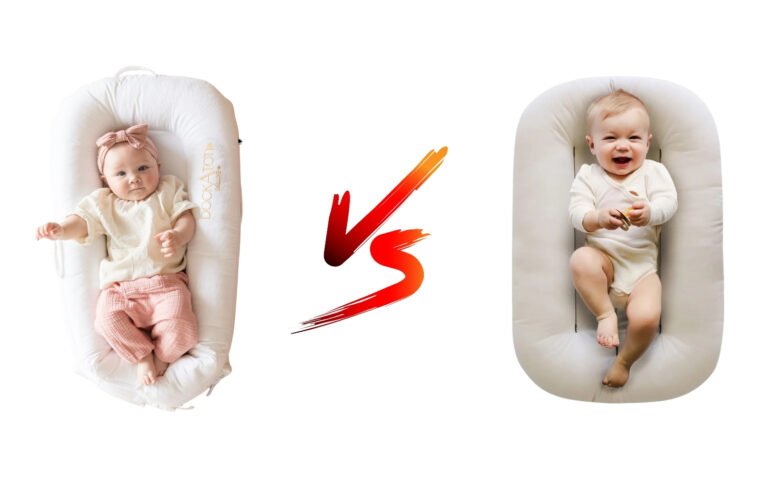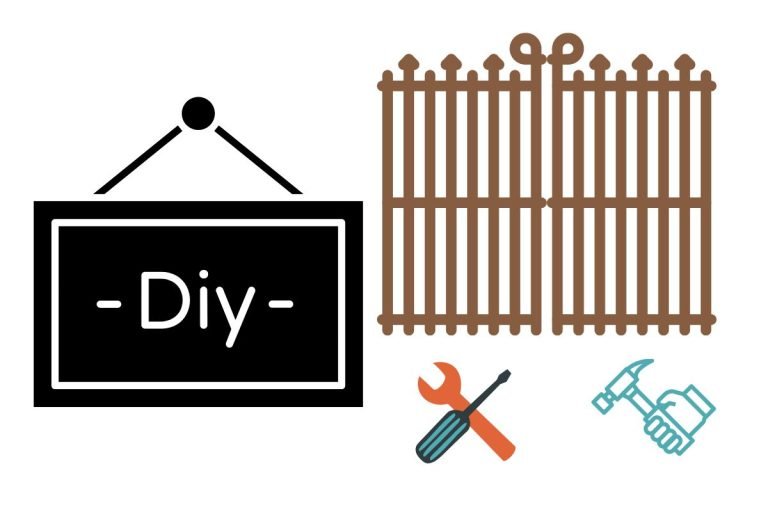Kids Motorcycle Size Guide: Find the Right and Safe Fit for Your Child in 2025
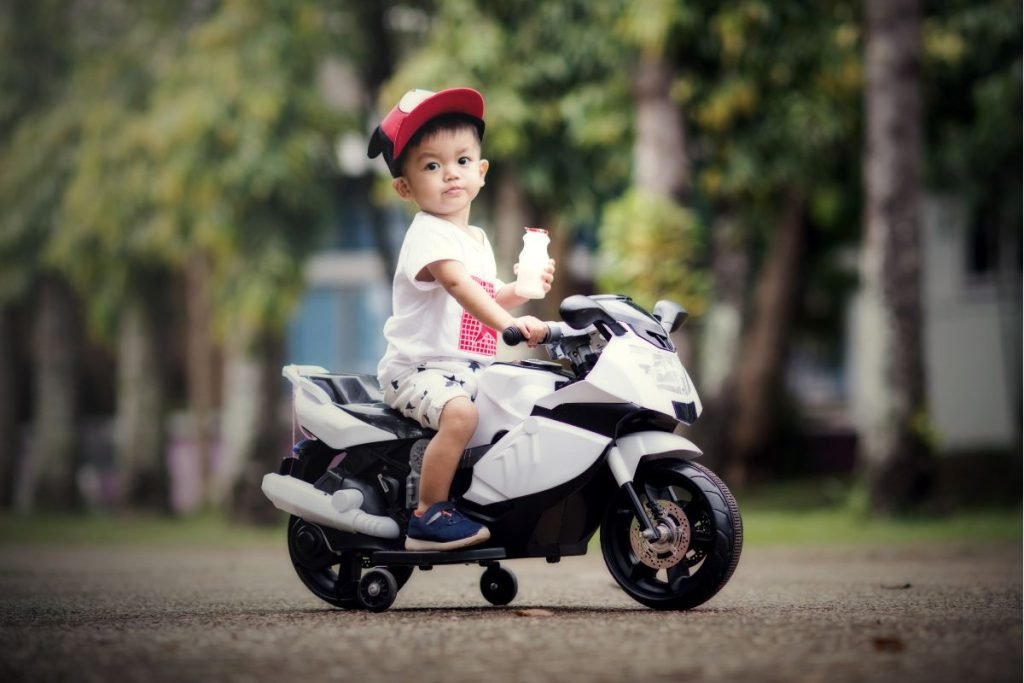
What size bike is right for your child?
Getting the perfect fit allows young riders to develop skills while enjoying trail fun safely. This kids’ motorcycle size guide will take the guesswork out of finding the best match based on age, height, weight, and skill level.
Learn how wheel size, engine power, and smartstart technology let manufacturers design suitable bikes for children.
This guide promises to help you nail the perfect fit for maximum family riding enjoyment.
Key Takeaway – Kids Motorcycle Size Guide
- Choose a starter motorcycle size based on the child’s height, weight, skill level, and age range. Start with small bikes and engines like 50cc.
- Ensure proper fit – a child can sit comfortably with feet flat on the ground, slight knee bend, and soft elbow bend gripping handlebars.
- Allow room for growth when sizing – consider the child’s near-future height. Move up to the next size if close to the max range.
- Use proper protective gear like a helmet, gloves, boots, and jacket. Closely supervise test rides to build skills safely.
Motorcycle Types for Kids by Age
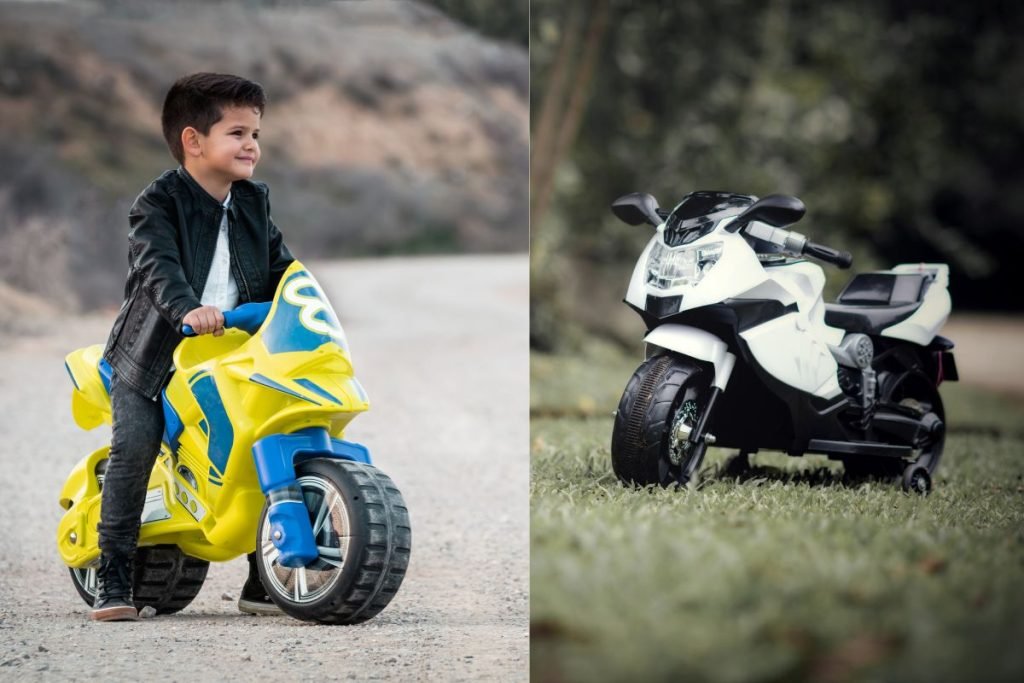
Balance Bikes (ages 2-5)
Balance bikes are made for kids ages 2-5 learning to ride. These bikes have no pedals or training wheels. This lets little kids use their feet to move the bike. It teaches them balance and control without being too hard. The small bike size and low seat fit their body as they grow. Riding around builds coordination for the future.
Electric Ride-Ons (ages 3-8)
Electric ride-on dirt bikes are a smart stepping stone for introducing kids ages 3-8 to off-road riding. These sturdy battery-powered bikes balance independent control with stabilizing assistance features. Kids can twist the throttle and operate brakes, while wide support wheels and limited top speeds prevent tip-overs.
The electric drive system responds to a child’s inputs without big manual gears or kickstarts – great for building skill levels. Some models have smart start technology, limiting torque and power output until riders size up. This allows parents to adjust assistance and govern a ride-on’s speed as their child’s abilities improve from ages 3 up to 8. For guidance comparing Electric vs Gas Kids Motorcycles, explore how each option suits beginner skill levels and family preferences.
Dirt Bikes (ages 3-15)
Once kids are ready for pedal power around age 3, sizing up to real dirt bikes grants a major thrill. These combustion engine models have small, medium, and large wheel sizes specially fitted for the developing bodies and abilities of riders ages 3 up to 15.
Factors like wheel size, minimum seat height, engine capacity, and maximum engine size/power output in CCs directly match the child’s size, leg length, weight capacity, and strength at each age.
This makes kickstarting and controlling the bike possible as kids grow bigger and more coordinated. Children feel like mini motocross racers when the bike’s size fits just right! For more help Choosing Dirt Bike for Child based on riding needs and skill level, check out our detailed comparison guide.
Mini Street Bikes (ages 6-12)
Mini street bikes are the perfect fit for kids ages 6-12 looking to take their bike handling skills to paved roads and parking lots. These small-scale street cycles allow pre-teens to acclimate to traffic environments in a compact package. Removing training wheels requires mastery of balance, braking, and gear shifts.
Young riders will love feeling like one of the big kids zipping around on their street machine! With an appropriately sized mini bike under them, developing roadway smarts and safety is made fun.
Key Sizing Considerations
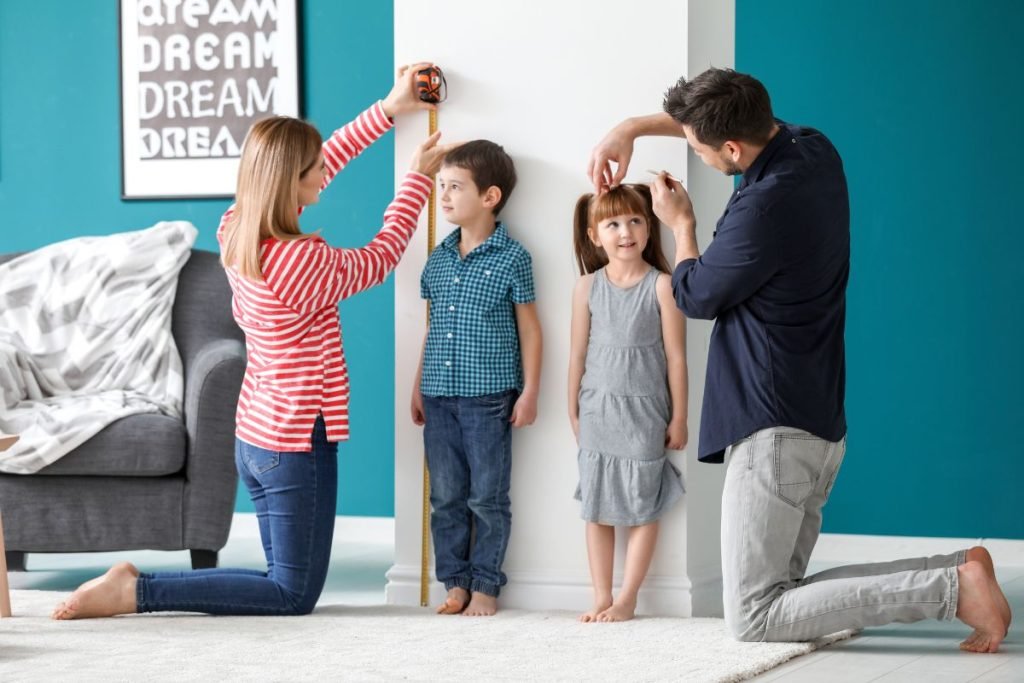
The child’s height and inseam length
The child’s total height and inseam (inside leg) length are important. When sitting on the bike seat, kids should be high enough for the bigger bike and put both feet flat on the ground. If the bike is too big, they can’t reach it. Having a slight bend in the knees when feet are down allows control. This lets kids stop, start, and steady themselves as needed.
Weight and strength
Consider the bike sizes, the child is height, and their body strength. Little kids do best on lighter starter bikes that are easy to handle and maneuver. Kids can handle heavier bike weights as they grow stronger over time. Start small and work up.
Proper arm reach
With hands properly gripping the handlebars, kids should have a little elbow bend. Arms should not be fully straight or overly bent. A slight bend allows safe control of brakes, throttle, and shifting abilities within easy reach of young riders.
Ability to sit with feet down
It’s key that kids can sit upright on the bike seat with both feet flat on the ground on either side when stopped. This planted position helps develop overall balance and coordination. It allows young riders to regain control by stopping and supporting themselves.
Getting the Right Fit
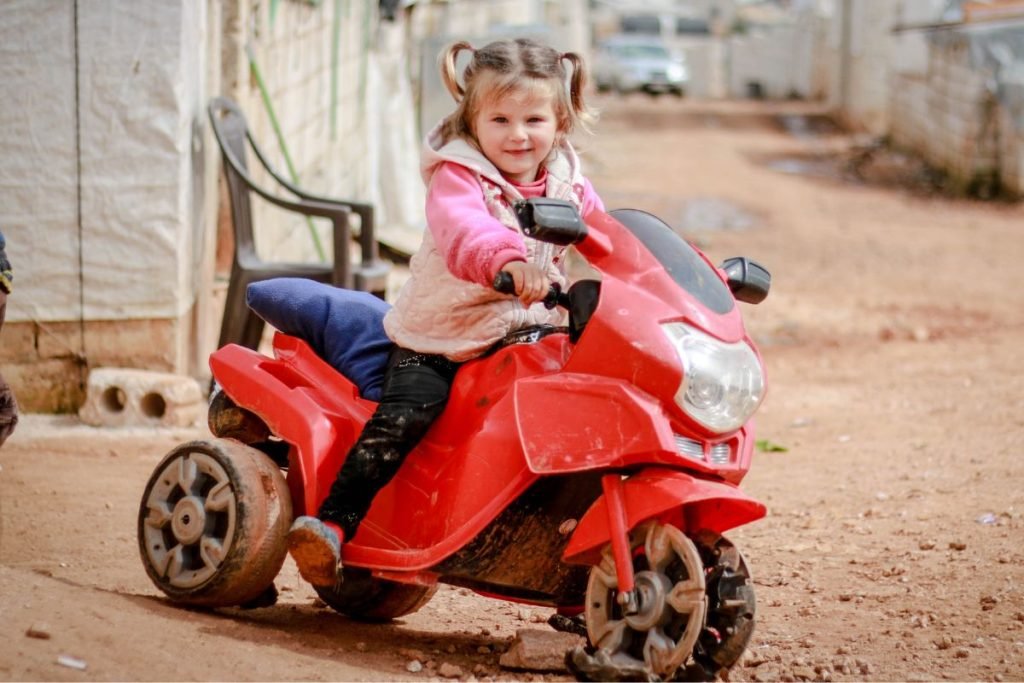
Feet Flat on the Ground When Seated
When first sitting on the bike seat, young riders should be able to plant both feet flat on the ground for balance. This lets kids brace themselves while stopping. Check that the bike’s seat height suits the child’s overall height and inseam length.
Legs should slightly bend when extending to touch down, not be fully straight. This grounded position aids control, weight distribution, and bike maneuvering.
Slight Bends in Arms on the Handlebars
With small hands gripping the handlebars, kids should have a soft elbow bend – no locking out. Fingers should curl naturally around brake levers and throttle controls within easy reach.
This arm positioning allows proper steering input while absorbing terrain impacts through bent joints. Hands raised to chest level keeps wrist strain low.
Slight Bend in Knees When Pedaling
When pedals are fully pushed forward, young riders’ knees should always maintain a slight bend – never lock out straight.
This bend allows joint flexibility to handle changing trail conditions. Knees act as shock absorbers for their still-developing leg bones and muscles when riding over bumpy dirt. Keeping knees always slightly flexed also aids balance and prevents over-extension.
Allow Room to Grow
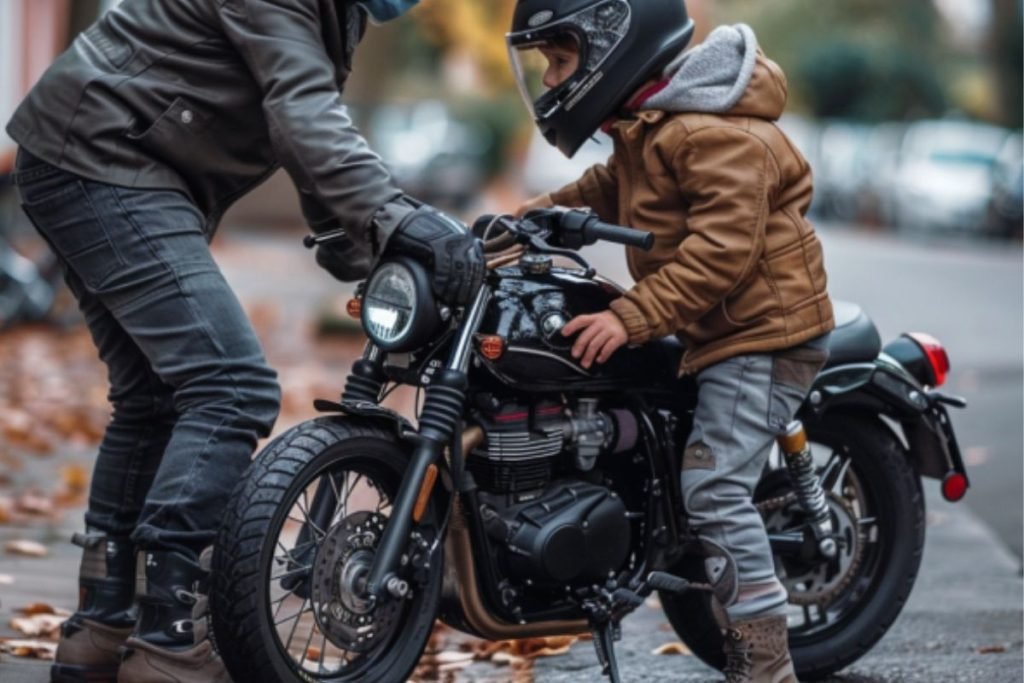
Size for Child’s Near-Future Height
When selecting bike size, consider the child’s current measurements and expected growth trajectory. Consult printed or online manufacturer size charts showing each bike’s maximum dimensions as kids mature.
Factors include inseam length, standing height, seated dimensions, and arm/torso reach needing room to lengthen. This may mean going a size up to spare frequent re-fitting costs.
Consider the Next Size Up If Close
If the child falls near the maximum size range for their current age, strongly consider sizing up. Build a buffer for predictable growth spurts on the horizon before they outgrow capabilities.
That next wheel size, engine displacement/CCs, or frame scale accommodates pending height and dexterity surges. This prevents their skills from overpowering a bike’s static limits.
Adjust Seat Height as Needed
As the child gets taller, re-check the bike fit and adjust the seat height accordingly. Raising the seat/handlebar position maintains proper leg extension, ergonomic posture, and weight distribution as their inseam and arm reach grow.
Handlebar angle changes may require shop adjustments to clutch/brake levers suiting modified limb proportions. Re-fitting grows bike lifespan.
Safety Gear Essentials
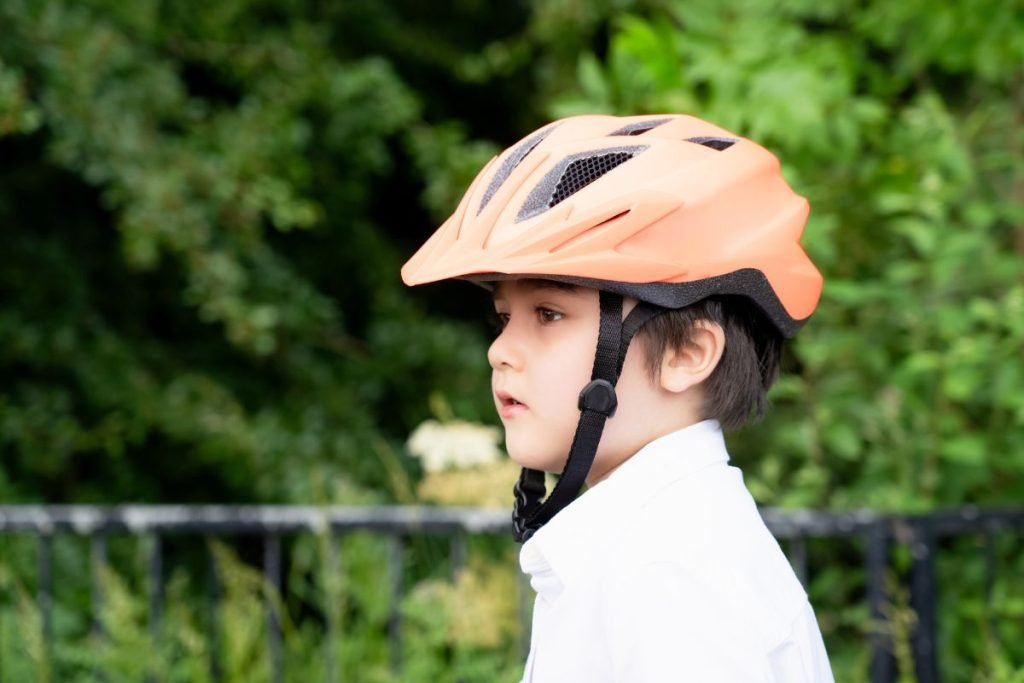
Properly Fitted DOT Helmet
A DOT-certified helmet with a perfect fit ensures head protection. Consider weight, ventilation, and viewport size suited for your child’s needs. Adjust chin straps snugly; the helmet should pull down slightly when open-mouthed.
Replace immediately if cracked or drops alter protective foam density. Getting the helmet shape and size right improves comfort, allowing kids to focus on the ride.
Durable Gloves, Boots, Jacket and Pants
Invest in motorcycle-specific gloves that protect the hands from vibration and abrasion. Seek sturdy over-the-ankle boots with slip-resistant soles to maintain good footing on pegs/shifters.
Jackets and pants of durable, breathable fabrics allow free movement while shielding skin. For maximum safety without overheating, layer for variable weather conditions.
Chest Protector, Knee, and Shin Guards
Hardshell chest protectors reduce vital organ impact forces: snug-fit knee pads cushion joint hyperextension and guard growth plate area. Shin pads defend protruding bones from bike/trail collisions.
For impressionable young riders, protecting confidence means maintaining the fun and staying safe, which bolsters their passion for developing hard-won skills.
Let Child Test Drive
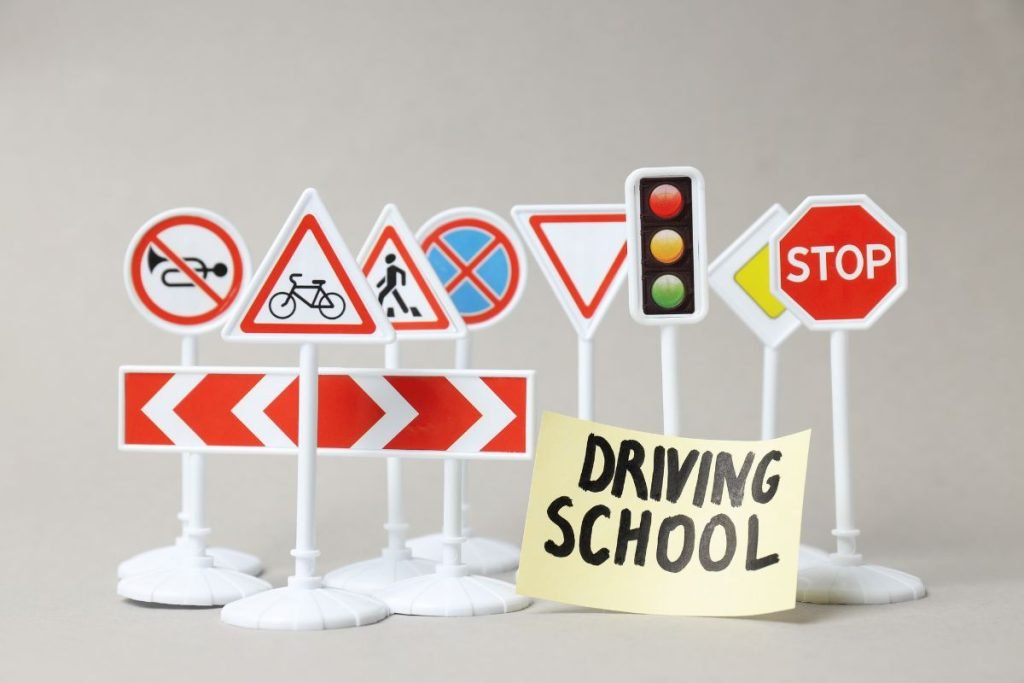
Ensure Comfortable Operation
Before committing to a motorcycle purchase, let the child gauge the model’s comfort and ease of use. Sitting stationary, have them grip controls and plant feet with good ground reach.
Check they can balance bike weight resting legs while sequencing braking, shifting, and throttle motions. Verify nothing strains their limited arm/leg power. Confirm cockpit dimensions suit their sightlines and operating dexterity. Ensuring good ergonomic positioning promotes safety.
Closely Supervise for Balance and Control
With kids suited in protection gear, closely supervise inaugural test rides. Assess their balance by maneuvering bike heft at walking speeds on level ground. When adding power or uneven terrain, be prepared to stabilize if needed, allowing them to regain footing.
Confirm they mesh machine handling with body positioning through curves. Adjust speed until bike responses become coordinated reflexes. Maintaining continual focus minimizes tip-over risks during skill progression. Celebrate hard-won mini-milestones!
Dirt Bike Size Guidelines by Age
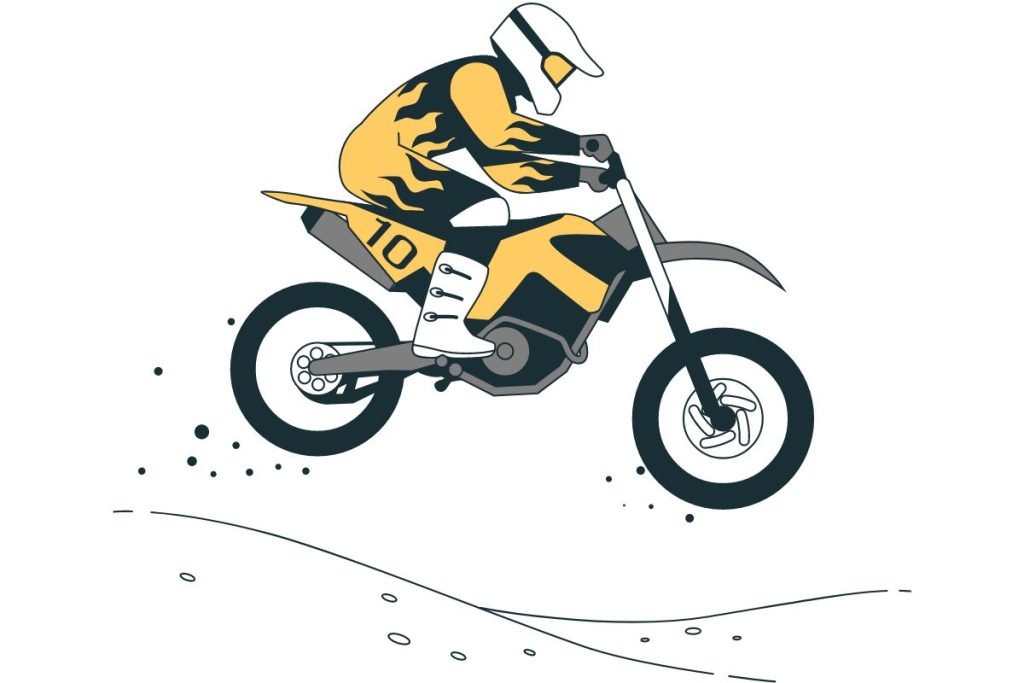
Ages 3-6 Years – Small Wheel 50cc Bikes
Small wheel 50cc models provide the ideal starter platform for young kids first progressing off push bikes. Diminutive frames accommodate short inseams around 20-25 inches. Light overall curb weight suits budding strength and coordination.
Modest horsepower levels teach throttle inputs without intimidating. These bikes build capacity handling grade changes on off-road trails. Bikes instill safety habits for lifelong enjoyment as skills develop from ages 3-6. Be sure to follow essential Kids Dirt Biking Safety tips during early rides to build confidence and prevent injury.
Ages 7-10 Years – Medium Wheel 70-125cc Bikes
When riders exceed small bike limits but aren’t ready for advanced output, medium-wheel 70-125cc models bridge the gap. Engine displacements delivering 5-10 hp suit gradual power appetite growth, while longer wheelbases add straight-line stability.
Seat heights fitting 25-30 inch inseams accommodate longer torso proportions. Durability withstands more ambitious jumps and cornering demands on motocross tracks. Bikes encourage responsibility through achieved competence.
Summary
Choosing the right dirt bike size is key for your child’s safety and fun. Pick a starter bike that fits your kid’s height, skills, and age. Use small bikes with training wheels first.
Then, go to medium bikes as your child grows. Bigger kids can use large bikes with more power. Make sure your child wears safety gear like a helmet. Give them training on how to ride properly.
This guide showed how to match your child to the right motorcycle size. Doing this right-size bike will help them enjoy riding trails while staying safe.
Frequently Asked Questions
What Size Motorcycle Should I Get for My Child?
Choose a bike your child can flat foot while seated that fits their height. Go for smaller engines like 50cc models for young kids and work up to more powerful options as they gain skills.
What Age Range Is Suitable for Kids’ Motorcycles?
Kids as young as 3 can start on a balance bike. Minibikes with small engines work well for ages 5-8. Youth models with 70-125cc engines are ideal for kids 8-12.
How Can I Ensure My Child Is Comfortable on Their Motorcycle?
Make sure they can easily reach the handlebars and foot pegs. Have them test-ride the bike to check for proper fit and control before buying.
Where Can I Find a Kids’ Motorcycle Size Chart for Reference?
Most major motorcycle brands like Honda, Kawasaki, and Yamaha have youth sizing charts on their websites to help match the right bike to your child.
Does Wheel Size Matter for Kids’ Dirt Bikes?
Yes, wheel size impacts stability and handling. Start kids on 12-14” wheels and gradually size up as they gain experience and motorcycle control.
